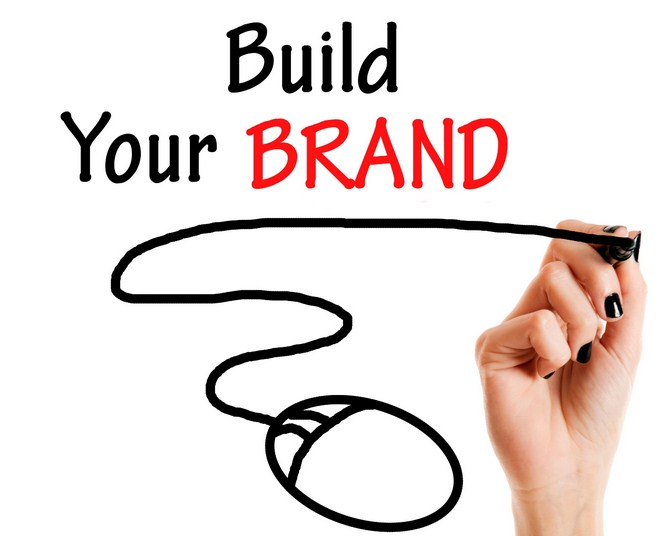How to Build a Strong Personal Brand for Your Career

In today’s competitive job market, having a strong personal brand is essential for career growth and success. A personal brand surpasses your resume and reflects your professional identity, values, and unique strengths. Whether you’re an entrepreneur, job seeker, or established professional, your brand can set you apart, attract new opportunities, and help you build a lasting impression in your industry.
In this comprehensive guide, we’ll cover everything you need to know about building a strong personal brand, from defining your core strengths to creating a digital presence and building lasting professional relationships.
- What Is a Personal Brand?
A personal brand is the perception others have of you professionally. It’s how you present your expertise, personality, and values. Just as companies use branding to differentiate themselves in the marketplace, professionals use personal branding to stand out in their careers.
Your brand answers key questions:
- Who are you?
- What do you do well?
- What makes you unique?
- What value do you bring to your field?
Think of yourself as your “CEO” and your brand as the message you want to send to employers, clients, or collaborators.
- Why Personal Branding Matters for Your Career
A strong personal brand can be a game-changer for your career, providing numerous benefits:
- Career Advancement: A compelling personal brand helps you stand out when seeking promotions or applying for new roles.
- Networking Opportunities: A clear brand helps others understand your expertise and recommend you for projects or collaborations.
- Thought Leadership: Building a personal brand positions you as an expert in your field, leading to invitations for speaking engagements, partnerships, and consulting opportunities.
- Job Security: Your brand can make you “recession-proof” by creating a consistent reputation that others trust.
- Defining Your Brand
Building a strong personal brand starts with understanding who you are and what you want to achieve. Here’s how to define your brand identity:
- Identify Your Strengths and Skills
List your key strengths, technical skills, and soft skills. Consider what you do better than others and what feedback you consistently receive.
Exercise:
Ask colleagues, friends, or mentors to describe your strengths in three words to gain external insights.
- Clarify Your Core Values and Purpose
Your brand should reflect your values and what drives you. Are you passionate about innovation, leadership, or helping others? Defining your purpose ensures your brand is authentic.
Tip: Write a personal mission statement to guide your brand strategy.
- Determine Your Target Audience
Understand who you want to connect with—hiring managers, industry peers, potential clients, or thought leaders. Tailor your messaging to resonate with this audience.
Example: If you’re targeting recruiters, emphasize your industry expertise and key accomplishments that align with job opportunities.
- Crafting Your Brand Message
Once you’ve identified your strengths, purpose, and audience, you should create your brand message. This includes your elevator pitch, bio, and professional story.
- Elevator Pitch
Your elevator pitch is a concise summary of who you are, what you do, and what makes you valuable.
Example:
“I’m a digital marketing specialist with 7 years of experience in SEO and content strategy. I help brands grow their online presence by creating data-driven campaigns that boost engagement and revenue.”
- Professional Bio
Your bio provides more context and can be used for LinkedIn, personal websites, and professional introductions. It should highlight your experience, accomplishments, and career goals.
Tip: Use a storytelling approach to make your bio more engaging.
- Building an Online Presence
Your online presence plays a crucial role in your brand. Most employers and professionals research candidates or collaborators online before making connections. Here’s how to build a strong digital footprint:
- Optimize Your LinkedIn Profile
LinkedIn is one of the most powerful platforms for building a professional brand.
Tips for a Winning LinkedIn Profile:
- Profile Picture: Use a professional, high-quality headshot.
- Headline: Craft a headline highlighting your expertise (e.g., “Software Engineer Specializing in AI-Powered Solutions”).
- Summary: Write a compelling summary that includes your achievements and what sets you apart.
- Recommendations: Request endorsements and recommendations from colleagues and clients.
- Create a Personal Website
A personal website is a digital portfolio showcasing your work, achievements, and professional story. It’s beneficial for creatives, entrepreneurs, and consultants.
Include:
- About Me page
- Portfolio or case studies
- Contact information
- Leverage Social Media
Use platforms like Twitter, Instagram, or Medium (depending on your industry) to share insights, engage with thought leaders, and build credibility.
Tip: Maintain a consistent tone and theme across platforms to reinforce your brand.
- Content Creation and Thought Leadership
Creating and sharing valuable content is one of the most effective ways to establish yourself as a thought leader in your field.
- Write Articles or Blog Posts
Sharing articles on LinkedIn, Medium, or your website helps demonstrate your expertise. Topics can include industry trends, personal experiences, or how-to guides.
- Speak at Events or Webinars
Participating in webinars, conferences, or panel discussions positions you as a credible authority and expands your professional network.
- Post Consistently
Consistent posting helps you stay visible and relevant. Share updates about your projects, learning experiences, or professional achievements.
- Networking with Purpose
Building a personal brand involves cultivating relationships with others in your industry.
- Attend Networking Events
Virtual and in-person networking events, conferences, and industry meetups provide opportunities to connect with professionals and showcase your brand.
- Build Genuine Connections
Focus on forming meaningful relationships rather than transactional connections. Engage with others’ content, ask thoughtful questions, and offer value when possible.
- Join Professional Groups
Join LinkedIn groups, Slack communities, or local meetups relevant to your field to expand your network and learn from peers.
- Consistency Is Key
Consistency in your messaging, tone, and values is essential for building a strong personal brand. Your audience should know what to expect from you across all channels.
Consistency Tips:
- Use the same profile picture and handle across platforms for recognition.
- Maintain a regular posting schedule.
- Ensure your messaging aligns with your core values and goals.
- Managing Your Reputation
Your brand isn’t just about what you say and how you act. Your reputation is shaped by handling feedback, collaborating with others, and navigating challenges.
- Handle Criticism Gracefully
Receiving constructive criticism is inevitable. Respond with professionalism and a willingness to improve.
- Celebrate Successes Publicly
Don’t be afraid to share your wins. Posting about milestones—such as completing a certification or leading a successful project—demonstrates growth and builds credibility.
- Evolving Your Brand Over Time
Your brand should evolve as your career progresses. Regularly assess your goals, achievements, and market trends to ensure your brand remains relevant.
Review Checklist:
- Has your industry focus changed?
- Are you developing new skills or shifting career paths?
- Do you need to update your online profiles or portfolio?
- Common Mistakes to Avoid
While building your brand, be mindful of these common pitfalls:
- Inconsistency
An inconsistent message or online presence can confuse your audience.
- Over-Promotion
Constantly talking about yourself without adding value can come off as self-serving.
- Neglecting Offline Branding
Your brand extends beyond the digital world. Ensure you present professionally in meetings, interviews, and public speaking engagements.
- Measuring Your Personal Branding Success
Evaluate the effectiveness of your branding efforts by tracking key indicators such as:
- Engagement: Comments, shares, and likes on your content.
- Opportunities: Invitations to interviews, collaborations, or speaking events.
- Network Growth: The number of meaningful professional connections you’ve built.
Conclusion
Building a strong personal brand is an ongoing process that requires self-reflection, consistency, and proactive engagement. You can establish yourself as a credible and influential professional in your industry by defining your strengths, crafting a clear message, and maintaining an authentic online and offline presence.
Whether seeking new job opportunities, aiming for a promotion, or building your network, your brand is a powerful tool for communicating your unique value to the world. Start building your brand today to unlock new possibilities for your career.
#PersonalBranding #CareerSuccess #ProfessionalDevelopment #NetworkingTips #ThoughtLeadership #OnlinePresence #BuildYourBrand #CareerGrowth
Our blog
Lastest blog posts
Tool and strategies modern teams need to help their companies grow.How to Build a Strong Employer Brand to Attract Top Talent
The modern employment market has made it more challenging than ever for firms to recruit top talent. Organizations now face...
November 1, 2025
By FxCareer
Employment, Job Facts, Recruitment
Top Skills Employers Look for in 2026: Navigating the Future Job Market
As the job market continues to change, so do employers’ desired skill lists. While some have been fundamental over recent...
October 29, 2025
By FxCareer
The Future of Recruitment: How AI and Automation Are Changing the Hiring Process
Recruitment is not an exception to how technology is changing industries in today’s fast-paced, digital world. Artificial intelligence (AI) and...
October 22, 2025
By FxCareer

Join 2,000+ subscribers
Stay in the loop with everything you need to know.




